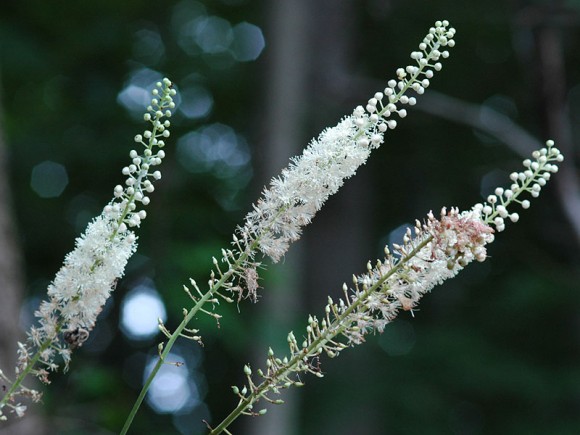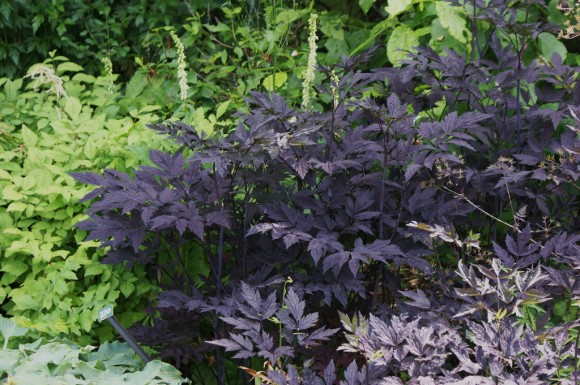Summer in New England with Actaea
I am still amazed about how plants grow in New England. We waited forever for summer to come and then sometime in June, it seemingly changed from spring to summer. In response to this change, the plants here in New England hit their stride and fill out the plant bed. I think it is a combination of the long days (the sun was up before 5 am and setting around 10 pm in late June), cooler nights (60’s), and using the right plants. Some of the plants that I had tried to grow for years finally look like the plants that I have seen growing in the books and English gardening magazines.
One plant that really rises to the occasion is Actaea or as it used to be called Cimicifuga. Two species in particular that look outstanding are Actaea racemosa or Actaea simplex. The common name for these plants is bugbane due to the smell which I guess was thought to be a nuisance to bugs. I honestly do not mind the smell but I am one of those weird people who likes the smell of chestnut trees in flower and skunks.
The Actaea racemosa in our garden has flowers reaching about 8′ in height. Right now, they are covered with bees. The flowers are borne way above the dissected foliage and are open, airy, and white. Over the past couple of weeks, one of the most asked questions from guests in the garden was: “what is the plant with the tall, white flowers with bees all over it.” For such a wonderful native plant, not too many people know about this fantastic perennial.
Actaea simplex is an eastern Asian counterpart to our native bugbane. It is a bit smaller but can still reach heights of 6′ tall. One of the outstanding characteristics of Actaea simplex is that it has a number of selections with dark purple to near black foliage. Some of these cultivars include: ‘Hillside Black Beauty,’ ‘Black Negligee,’ and ‘Brunette.’ The dark foliage of these plants is striking, especially during the long days of a New England summer. The foliage is a good contrast for other chartreuse leaved plants or plants with brightly colored flowers.
Both species require rich damp soil with adequate drainage. Actaea simplex is probably more needing of shade than Actaea racemosa. But again, this is where garden envy sets in. For those of you who lament that you could never live in Maine due to the snow and cold, the flip side is that you can grow a lot of plants, like Actaea, in sunnier spots during the summer than you would be able to get away with in more southernly latitudes.
Are you growing any of the bugbanes in your garden? How are they growing for you?
-Rodney
Photos: delawarewildflower.org,

